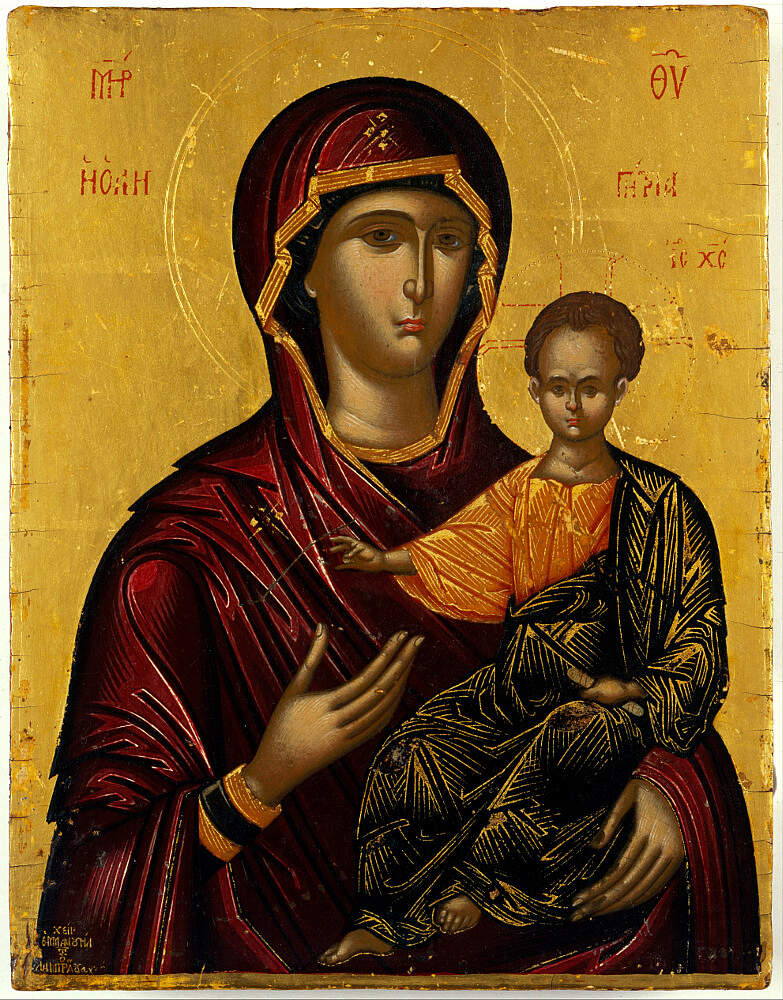
According to tradition, in the 11th or 12th centuries, an icon of the Virgin was carried on the waves to the shores of Mount Athos in Greece, near the monastery of Iviron. This icon was of the "Hodigitria" type, representing the Mother of God carrying the Holy Child in majesty and with the other hand, designating him as "the way, the truth and the life."
The monks carried the image to their church, inside the monastery. But the next day, it disappeared. They later found it under the main, large gate. After this inexplicable transfer reoccurred a few times, the community decided to build a small shrine for it, and named the image "Portaitissa," "the one who keeps the threshold."
Around 1980, a Mount Athos hermitage called “Hermitage of the Nativity” opened an icon-making shop. The first icon that was painted there was a replica of the "Portaitissa."
Around the same time, a Chilean professor of Art History in Montreal, José Munos, converted to Orthodox Christianity and went on a visit to Mount Athos. At the hermitage of the Nativity, he was struck by the image of the "Portaitissa," and bought the first replica, taking it back with him to Montreal. Late in November of 1982, during the night, Munos smelled an unusual perfume: the icon was exuding a sweet-smelling oil known as myrrhon (the same oil used in the Greek Orthodox tradition to make holy Chrism, known as Holy Myrrhon) flowing from the hands of the Child, those of the Mother, and from the star on her shoulder.
Orthodox Christians noticed that this myrrh began to flow a year after the glorification of the New Martyrs (the Russian martyrs) which could mean that, just as the “myrrophoric women” embalmed the body of Christ before his Resurrection, so too the Mother of God embalms the Russian people today in preparation for the spiritual resurrection of Russia.
The Marie de Nazareth Team